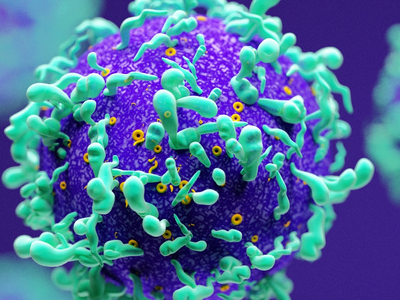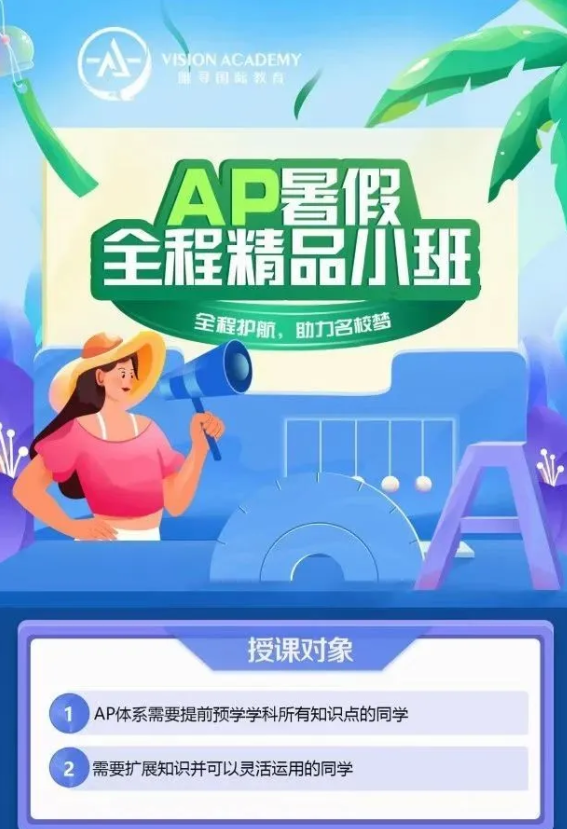在学习AP的过程中,适应英文授课,考试对于有些同学来说还是比较难的,因此同学们在平时可要认真的预习和复习课程内容哦。下面就带大家走进本期的AP生物知识点复习。

Adaptation
Any inherited structure, behavior, or internal process that enables an organism to respond to environmental factors and live to produce offspring is called an adaptation.
Evolution
The gradual change in a species through adaptations over time is evolution.
Growth
Growth results in an increase in the amount of living meterial and the formation of new structures.
Reproduction
One of the most obvious of all the characteristics of life is reproduction, the production of offspring.
Species
A species is a group of organisms that can interbreed and produce fertile offspring in nature.
Stimulus
Anything in an organism’s external or internal environment that causes the organism to react is a stimulus.
Dependent variable
The condition that any changes in it depend on changes made to the independent variable is called dependent variable.
Independent variable
The condition in an experiment that is tested is the independent variable.
Ecology
Ecology is the study of interactions that take place between organisms and their environment.
Ecosystem
An ecosystem is made up of interacting populations in a biological community and the community’s abiotic factors.
Niche
A niche is all strategies and adaptations a species uses in its environment.
Autotroph
An organism that uses light energy or energy stored in chamical compounds to make energy-rich compounds is a producer, or autotroph.
Heterotroph
An organism that cannot make its own food and feeds on other organisms is called a heterotroph.
Food chain
A food chain is a simple model that species use to show how matter and energy move through an ecosystem. In a food chain, nutrients and energy move from autotrophs to heterotrophs and, eventually, to decomposers.
Limiting factor
A limiting factor is any biotic or abiotic factor that restricts the existence, numbers, reproduction, or distribution of an organisms.
Tolerance
The ability of an organism to withstand fluctuations in biotic and abiotic environmental factors is known as tolerance.
Carrying capacity
The number of organisms of one species that an environment can support indefinitely is its carrying capacity.

Exponential growth
Exponential growth means that as a populetion get larger, it also grows at a faster rate.
Biodiversity
Biodiversity refers to the variety of species in a specific area.
Endangered species
A species is considered to be an endangered species when its numbers become so low that extinctions is possible.
Extinction
Extinction is the disappearance of a species when the last of its members dies.
Diffusion
Diffusion is the net movement of particles from an area of higher concentration to an area of lower concentration.
Organelle
With the development of better mocroscopes, scientists observed that all cells contain small, specialized structures called organelles, such as mitochondria, chloroplast and ribosme.
Nucleus
The central membrane-bound organelle that manages or controls cellular functions is called the nucleus.
Plasma membrane
Plasma membrane is the flexible boundary between the cell and its environment, to allow a steady supply of these nutrients to come into the cell no matter what the external conditions are.
Selective permeability
Selective permeability is a process in which a membrane allows some molecules to pass through while keeping others out.
Phospholipid
A phospholipid has a glyceral backbone, two fatty acid chains, and a pgosphate group.
从目前公布的2021年AP考试结果来看,仅有7个科目理想分上升,18个科目的满分率有不同程度地下降,足以见得AP对于学员的考核正在变得越来越严格。因此为了参加考试的同学复习要更用心呀,如果需要点拨思路,可以点击预约试听【AP复习冲刺班】——

点击
查看。









































 沪公网安备 31010502004453号
沪公网安备 31010502004453号




 成功提交后我们将尽快与您联系,请注意来电哦!
成功提交后我们将尽快与您联系,请注意来电哦!











